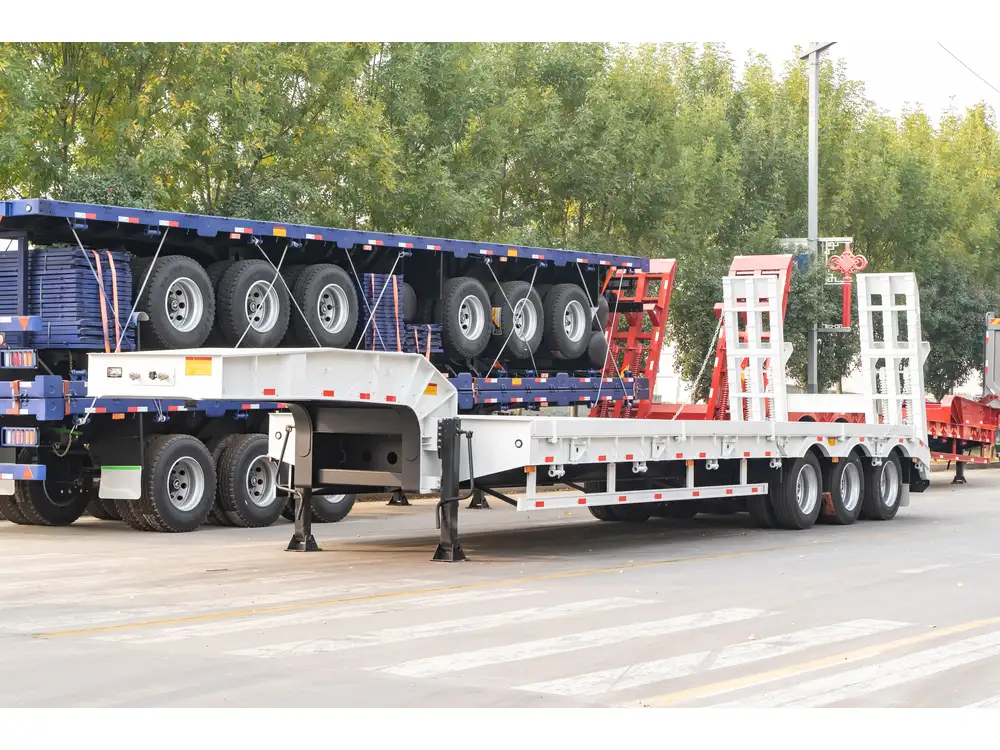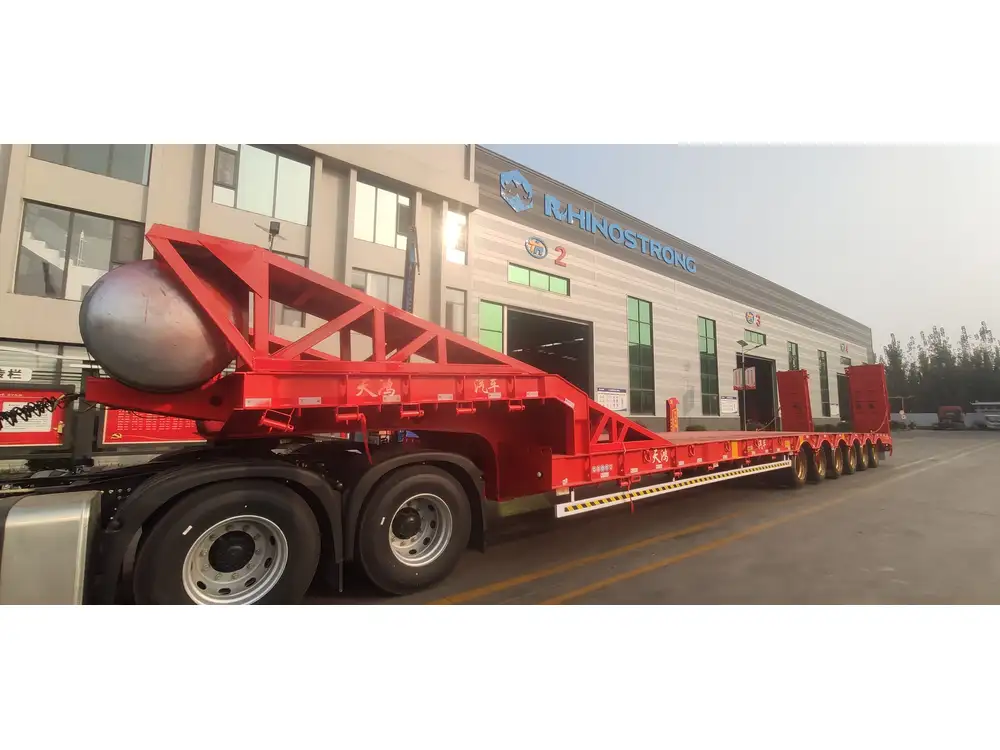Understanding the specifications of semi-trailers, particularly their lengths, is crucial for manufacturers, suppliers, and end-users alike. This detailed exploration is tailored to provide insight into the complexity surrounding semi-trailers, encompassing industry standards, regional regulations, and real-world applications.
I. Semi-Trailer Length: A Fundamental Overview
A. Definition of a Semi-Trailer
A semi-trailer is a type of trailer that is designed to be towed by a semi-truck. It consists of a cargo area supported at the rear by its wheels and the front resting on the truck’s fifth wheel. This unique design allows for enhanced maneuverability, making semi-trailers a pivotal component of the freight transport industry.

B. Typical Lengths of Semi-Trailers
The lengths of semi-trailers vary significantly based on their design, function, and regional regulations. Here are the most common types:
| Semi-Trailer Type | Standard Length | Usage |
|---|---|---|
| Standard Dry Van | 48 to 53 feet | General freight transport |
| Reefer (Refrigerated Trailer) | 48 to 53 feet | Perishable goods transportation |
| Flatbed | 48 to 53 feet | Heavy construction materials, machinery |
| Step Deck (Lowboy) | 48 to 53 feet | Oversized cargo transport |
| Tanker | 40 to 50 feet | Liquid transport (fuel, chemicals) |
C. Importance of Proper Length Measurement
The length of a semi-trailer can have significant implications on various operational aspects, including fuel efficiency, load capacity, and regulatory compliance. Understanding these metrics is essential for making informed decisions regarding purchases and logistics.
II. Regulatory Standards for Semi-Trailer Lengths

A. Federal Guidelines in the United States
In the United States, the Federal Highway Administration sets the length limits for semi-trailers involved in interstate commerce:
- Standard Length: 48 feet for most trailers.
- Extended Length: 53 feet for specific configurations, like semi-trucks towing reefer trailers.
B. State Variances and Compliance
Several states may permit longer semi-trailers under specific conditions:
- California: Allows trailers up to 57.5 feet for certain freight types.
- Texas: Permits double trailers with a combined length up to 82 feet.
Understanding these variances is vital to avoid fines or operational shutdowns.
III. The Impact of Trailer Length on Operations

A. Payload Capacity and Efficiency
Longer trailers often allow for increased payload capacities. For instance, a 53-foot trailer typically accommodates more freight than a 48-foot unit. However, operators must also consider the following:
- Weight Distribution: Longer trailers can complicate weight distribution across axles, affecting stability and safety.
- Fuel Economy: Longer trailers may encounter increased aerodynamic drag, potentially leading to higher fuel consumption.
B. Maneuverability and Urban Constraints
Urban environments pose challenges for longer trailers, with many cities implementing restrictions based on trailer length. Businesses should assess:
- Loading Dock Restrictions: Many warehouses and shipping facilities have size limits.
- Road Conditions: Longer trailers may not navigate tightly-constructed roads or bridges as effectively as shorter ones.
C. Cost-Benefit Analysis of Semi-Trailer Length Choices
Selecting the appropriate semi-trailer length involves weighing the cost against potential profitability. Consider factors such as capacity, fuel efficiency, operational restrictions, and repair costs.

IV. The Evolution of Semi-Trailer Lengths Over Time
A. Historical Trends
The standard lengths of semi-trailers have evolved in response to:
- Economic Demands: Increased demand for freight transportation has led to the adaptation of trailer lengths to maximize cargo capacity.
- Technological Advancements: Improved engineering and materials allow for longer and lighter trailers without sacrificing strength.
B. Future Predictions
Looking forward, industry experts predict a continued emphasis on:
- Streamlined Designs: Innovations aimed at minimizing aerodynamic drag and enhancing fuel efficiency.
- Sustainability: A push towards lighter materials and enhanced efficiency to mitigate environmental impact.

V. Conclusion: Making Informed Decisions about Semi-Trailer Lengths
Selecting the right semi-trailer length is an intricate decision that impacts operational efficiency, compliance, and cost management.
A. Key Takeaways
- Understand Regulatory Standards: Familiarity with federal and state regulations is critical.
- Consider Operational Variables: Evaluate payload capacities, fuel economy, and maneuverability.
- Stay Informed about Trends: Awareness of historical trends and future predictions can aid in strategic planning.
B. The Path Forward
We encourage businesses in the transportation sector to stay updated with industry standards and explore innovative designs and materials that align with modern logistics challenges and sustainability goals. The world of semi-trailers is multifaceted and constantly evolving; those who adapt will thrive in this competitive landscape.
This detailed guide provides a robust foundation for understanding the nuances surrounding semi-trailer lengths, thus empowering manufacturers, carriers, and logistics managers to make informed decisions that benefit their operations and bottom lines.



